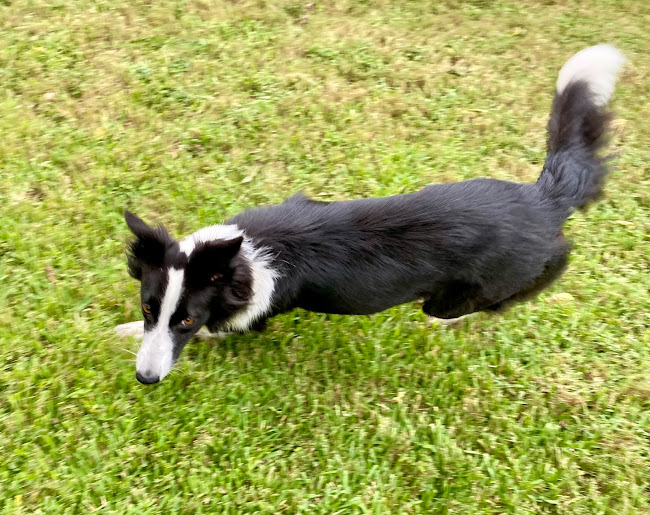Dog body language related to stress and/or conflict includes yawning, lip licking, rigid body stance or "freezing," turned head, and a closed mouth. When a dog is stressed, they display behaviors such as licking their lips or nose, or yawning or sneezing to displace anxiety. They may shake as if they're wet, display whale eye if they're uncertain, have dilated pupils, or increase shedding.

Body language related to stress and/or conflict includes tense body posture with raised hackles, a furrowed brow, and a closed mouth or lip licking. Dogs may exhibit avoidance behaviors such as turning away, yawning, or attempting to hide. Signs of conflict can include a stiff body, wide eyes, and ears held back or flattened against the head, accompanied by growling or snapping when feeling threatened or uncomfortable.
It's important to know that if a dog enters the physiological process of fight-or-fight, the situation is no longer under the dog's control. Long-term negative consequences are likely if the dog is in fight-or-flight mode often, and being in fight-or-flight is exhausting physically, mentally, and emotionally to a dog.
A relaxed and neutral dog has happy, almond-shaped eyes, a slightly open relaxed mouth, and naturally relaxed ears (so understanding your dog's natural ear placement is important). A neutral dog has a happy, relaxed expression, and a slightly open mouth, may display distance-decreasing behaviors, and may have an aimlessly wagging tail that indicates happiness. In a relaxed and neutral dog, you expect to see a loose body posture, relaxed facial muscles with a neutral expression, and ears held in a natural position. The tail may be wagging gently or held in a neutral position, and the dog’s mouth may be slightly open with a relaxed jaw.

A dog displaying offensive, threatening, or aggressive behavior may stare threateningly with direct eye contact expecting you to look away, bared teeth with lips pulled upward aggressively or tense, closed mouth when not snarling or growling, or an aggressive pucker with larger lips, raised ears, leaned-forward posture indicating they my lunge or nip, and their tail may be wagging or held up stiffly to appear larger. An offensive dog may exhibit a stiff body posture, raised hackles along the back, a tense facial expression and exposed teeth, and ears pinned back or forward in an alert position. The tail may be raised high and stiff, or wagging rapidly in a stiff manner.
A dog displaying defensive, threatening, or aggressive behavior may have wide, round eyes indicating fear or distress, and flattened ears indicating fear. A defensive dog may show signs of fear or anxiety, such as cowering, tucking the tail between the legs, and avoiding direct eye contact. The body may be tense, with the head lowered and ears flattened against the head. The dog may also growl or bark defensively while trying to create distance from the perceived threat.


No comments:
Post a Comment